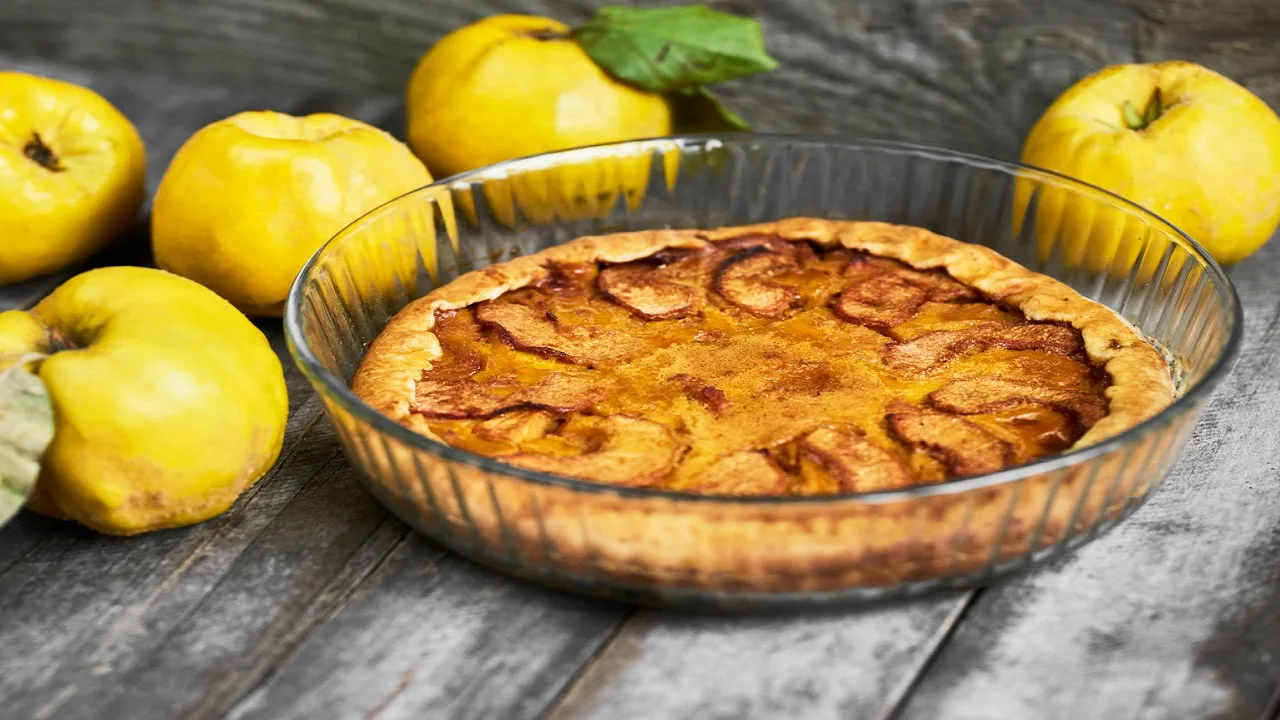A wonderful scent, a unique taste, and also rich in vitamins and nutrients, quince is healthy and delicious and a real all-rounder in the kitchen. It is worth (re)discovering, for example, with a delicious quince cake.
The quince is a true nutritional bomb
Quinces are one of the oldest cultivated fruit species. The Babylonians cultivated this fruit 6,000 years ago. There are around 200 different types of quince worldwide. The quince has also become native to Germany.
Quinces are not only delicious, but also really healthy. For example, a quince contains more vitamin C than an apple. Quinces only contain 39 kilocalories per 100 grams, but a variety of valuable vitamins, minerals and trace elements that strengthen the body and have a positive effect on health.
The ingredients in detail
- The quince is rich in vitamin C and zinc and thus strengthens the immune system.
- Eating quinces has a positive effect on intestinal health. The fiber and tannins they contain promote digestion and have an antibacterial effect by binding free radicals. They can soothe an irritated intestine and help detoxify the body.
- The high pectin content in quince lowers cholesterol levels.
- Many B vitamins, including folic acid, which is important for pregnant women, support cell metabolism.
- The vitamin A in quince strengthens eyesight and promotes the development of mucous membranes and skin.
- The potassium it contains lowers blood pressure and supports heart function.
- Other minerals and trace elements such as sodium, iron, manganese and fluorine are also contained in significant quantities. Iron, for example, is essential for blood formation.
A multi-talent in the kitchen
Related to the apple, but much more exciting in taste. The balance between sweet and sour is what makes quinces special. Connoisseurs say they can taste all the fruit flavors of the earth in them. But be careful: even though they smell wonderful, quinces are not suitable for eating raw. The flesh is hard and tastes woody. However, as a puree, jelly, or compote, they make many gourmets’ hearts beat faster.
Quinces are traditionally made into jam, jelly, or bread. In some regions, quince bread, also known as quince bacon, quince candy or in Spain “dulce de membrillo”, is very popular. It helps to digest all the sweets, especially at Christmas time.
Quinces can also be made into lemonade, liqueur, or syrup. They are also very suitable as a cake topping. Do you prefer savory food? No problem: baked quinces also taste great with game, cheese or fish.
recipe “Upside-down quince cake”
Ingredients
- 1 kg quinces
- 130 g butter
- 120 g sugar
- 150 g brown sugar
- 2 eggs and 1 egg yolk
- 1 vanilla pod
- 1 pinch of salt
- 120 ml milk
- 170 g flour
- 2 teaspoons baking powder
- 80 g ground hazelnuts
preparation
- Preheat the oven to 180 degrees. Wash the quinces, quarter them, remove the core and cut into thin slices.
- Melt two tablespoons of butter in a saucepan or ovenproof pan, add brown sugar and let it melt slowly. Remove the pan from the heat and let the caramel cool briefly.
- Place the quinces in the caramel. Alternatively, fill a cake tin first with caramel and then with quinces.
- Beat the butter and sugar until fluffy. Add the eggs, egg yolks, vanilla and salt and mix. Gradually stir in the milk.
- Bake the cake in the preheated oven for about 45 minutes.
- Allow the quince cake to cool briefly, then turn it out onto a plate and serve lukewarm.
